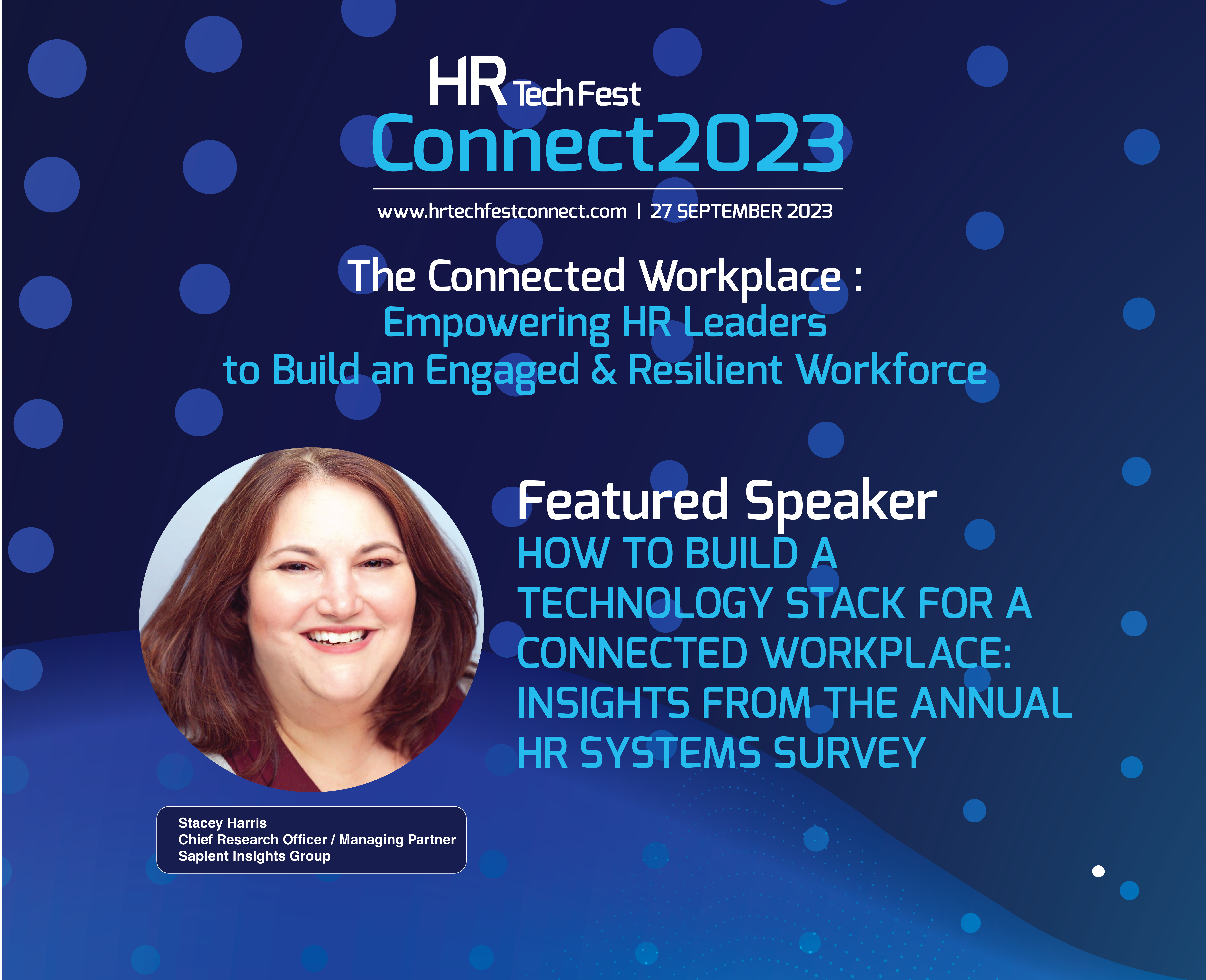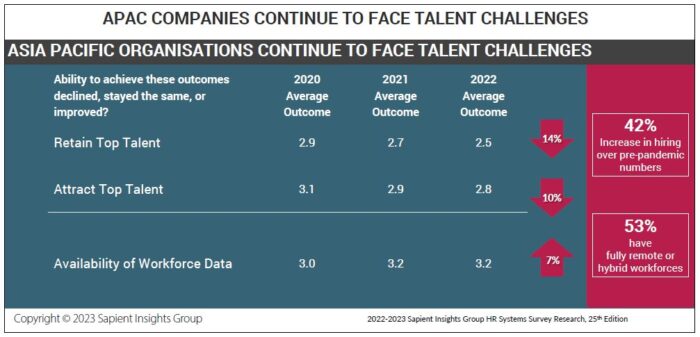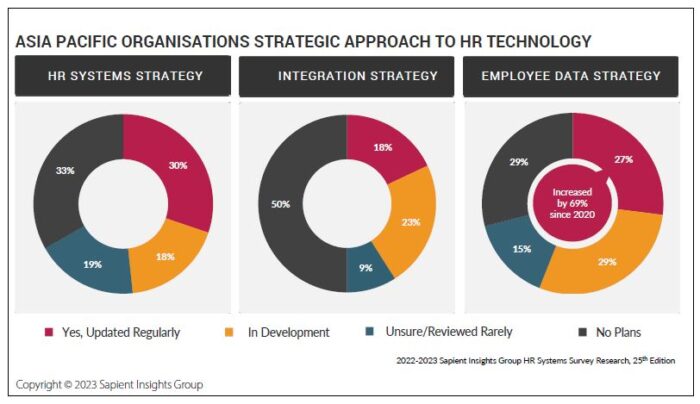No Normal: How the business of HR shifted from tactical to strategic
- HRM Asia Newsroom

There is no “normal” to return to, but that has not stopped our minds and hearts from hoping to return to something close to “normal” after the significant business upheavals we’ve encountered in the last three years. The impact of monumental change is no longer imminent; it is here to stay. And, for those of us in Human Resources, the business of HR has forever changed.
We all felt the shift as it was happening; overnight, we faced talent scarcity, unreliable supply chains, changing workforce demographics, and new AI technology requiring us to reimagine future skill sets. These challenges impact organisations globally, but those headquartered in the Asia-Pacific region are facing the most significant gaps in the availability of skilled labour and critical talent due in part to the region’s economic successes. Over a three-year period, Sapient Insight Groups Annual HR Systems research found that Asia-Pacific organisations saw markedly reduced annual outcomes in their ability to retain and attract top talent, while 42% still have plans for increasing their hiring over pre-pandemic numbers.

Even when skilled workforces can be found at high enough levels to meet the growing demand, organisations need help to keep top talent engaged enough to stay with the company long term. With remote work opportunities and increased access to higher education, our world is markedly smaller in hiring quality talent. Still, our global workforce feels more disengaged than ever, with two-thirds of employees feeling disconnected from their current colleagues.
Many Asia-Pacific organisations are looking to HR Technology as a valuable tool to help acquire and retain a growing number of employees, allowing them to both increase HR efficiencies and colleague collaboration.

Over the last three years, we have seen the average Asia-Pacific organisation’s per-employee spending on HR technology increase threefold, and the percentage of organisations with at least one HR application in use jump from 50% to 75% in our last annual survey. Payroll solutions are the most frequently adopted application, but APAC organisations are also heavily investing in solutions critical to managing the employee experience, such as platform tools like Human Resource Management Systems (HRMS), along with employee and manager self-service tools, and HR portal technologies.

Keeping talent is as critical as finding new talent – driving organisations’ desire to continue improving the employee experience. Before 2020, just 6% of organisations had a substantial number of their workforce working fully remotely or in hybrid environments. The APAC region continues to have some of the highest percentages of remote workers, with 53% of organisations stating they have some level of hybrid work offering today and another 21% claiming they also offer some level of fully remote positions.
With the shift to work-from-home and hybrid working environments, technology has become more critical than ever to employee experience outcomes. Organisations are rushing to see what their current solutions can do and what complementary or new solutions they may need to add to meet changing employee expectations. Beyond existing application investments, the APAC region’s top plans for increased HR technology spending in 2023 included:
- Recruiting and onboarding
- HR analytics and planning
- Learning and training
- Wellness and benefits
- Skills management
Although we are seeing increased spending and adoption of HR technology across the Asia-Pacific market, we still need more strategic planning when architecting an effective HR technology stack that creates employee connections and value for our organisations. Only 30% of Asia-Pacific organisations have an updated HR Systems strategy that helps them clearly articulate a current and future state HR technology environment and how that aligns with business goals. Even fewer organisations have a process for ethically managing the increased amounts of employee data they gather daily or how they will integrate that data into a helpful business environment.

An HR technology environment is a complex set of applications, platforms, data sets, and intelligent workflows utilised by an organisation and its workforce to support the business. An HR systems strategy underpins and supports the organisation’s overarching business strategy, and part of that business strategy is how innovative and competitive a company is, what it wants its market share and profitability to be, and how it treats its customers – including what its customers say about them. Over the last five years, Sapient Insights Group has found that organisations that invest in strategic planning of their HR systems, data integration, and an adaptive approach to change management regularly see double-digit increases in these business outcomes. An HR systems strategy alone was aligned with a 12% increase in these outcomes in 2023 versus organisations with no HR systems strategy.

“Creating an HR technology environment that achieves actual outcomes requires careful planning, constant evaluation, and regular updating to ensure the organisation has the information it needs for informed decision-making.” – Stacey Harris, Chief Research Officer and Managing Partner, Sapient Insights Group
Creating an HR technology environment that achieves actual outcomes requires careful planning, constant evaluation, and regular updating to ensure the organisation has the information it needs for informed decision-making. Part of your HR systems strategy needs to show how your solutions will drive significant business outcomes and improve the value of the investment. This data can be part of your business case for acquiring new, more effective solutions. Every HR technology investment should be focused on outcomes.
The HR systems strategy builds on the organisation and HR strategies to provide tools, technologies, and data to create a more connected work environment and allow the organisation to understand its needs as it relates to its workforce. If you are a small organisation just starting the journey into HR technology, begin now, as the baseline solutions you put in place will build the foundation for your organisational culture and the data and information you will need to grow your business faster. If you are a larger organisation, it is never too late to get started – and you will be amazed by how a little planning can begin to reduce the number of shadow systems, and fire drills your HR function faces regularly.
If you would like to see the most recent updates from Sapient Insights Annual HR Systems Survey, now in its 26th edition, join us at HRM Asia’s HR Tech Fest Connect 2023, which is a one-day, all-virtual event taking place on September 27.
I will reveal how global organisations are using technology to create and enhance connected workplaces and share preliminary Asia-Pacific data from this year’s annual survey in our session on How to Build a Technology Stack for a Connected Workplace: Insights from the Annual HR Systems Survey.
About the author: Stacey Harris is Chief Research Officer and Managing Partner of Sapient Insights Group.






